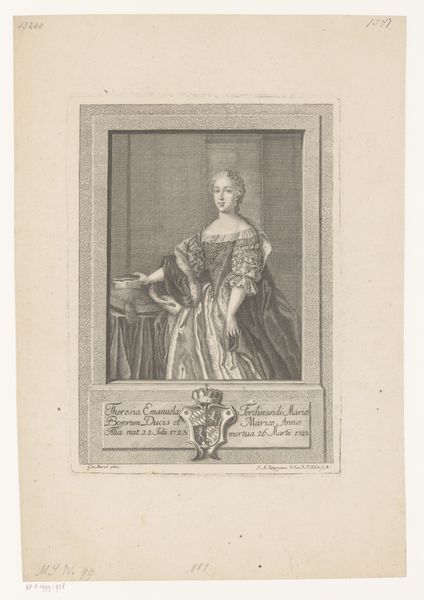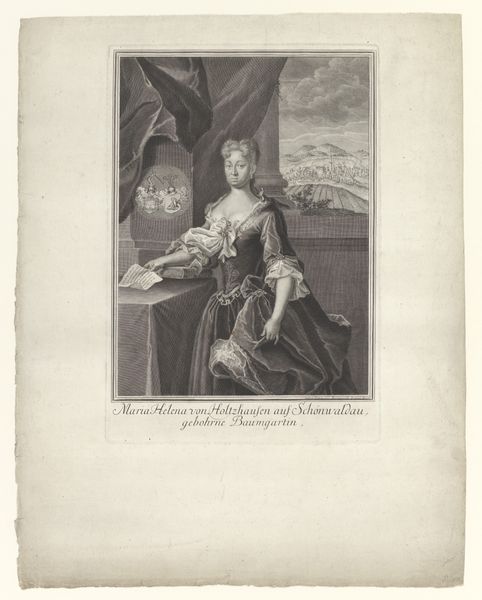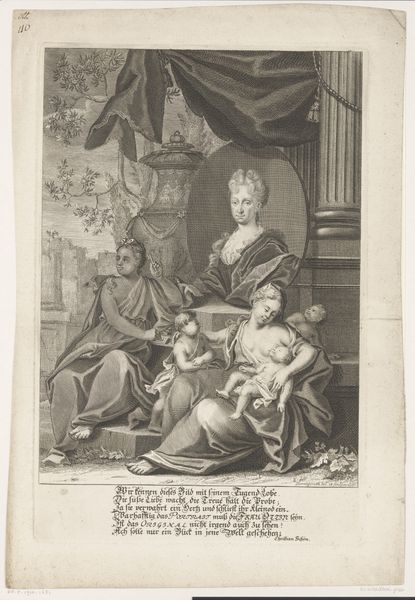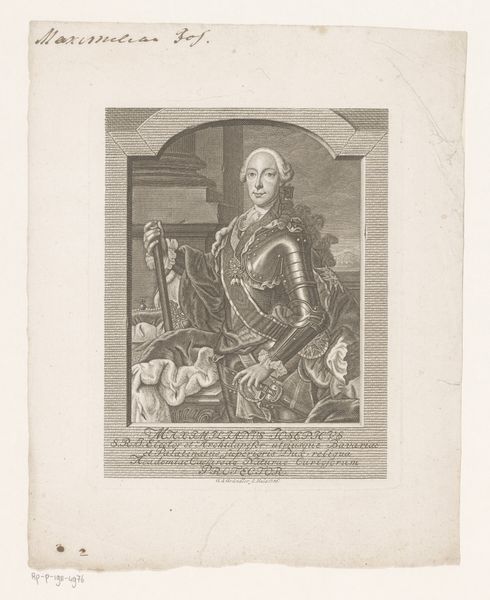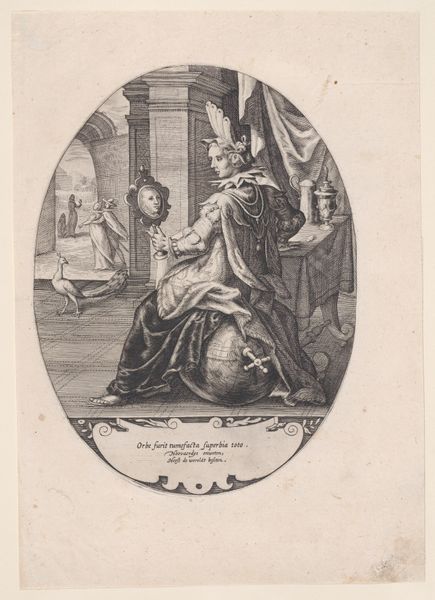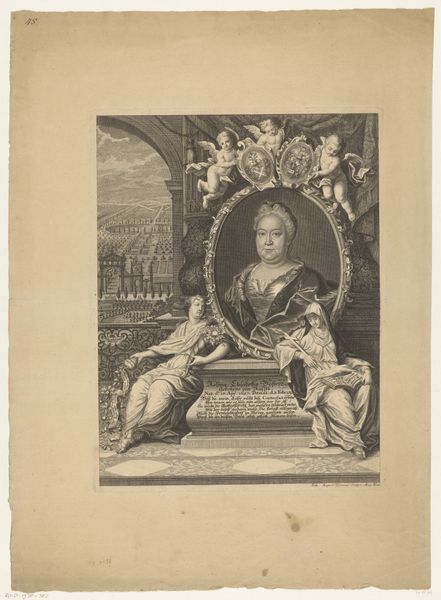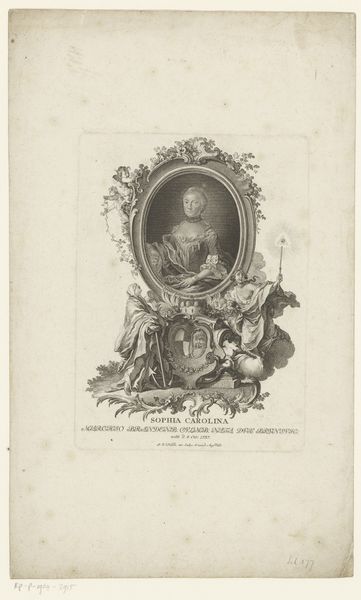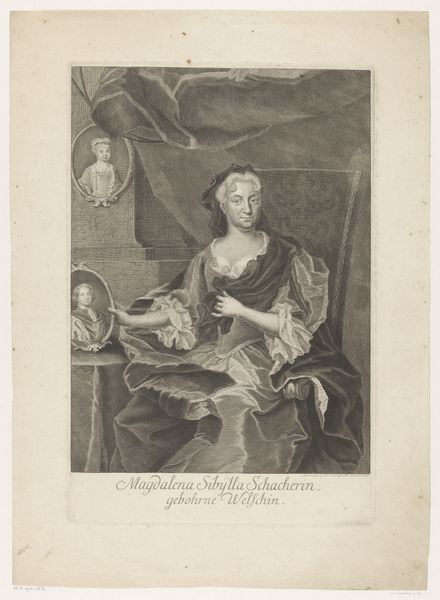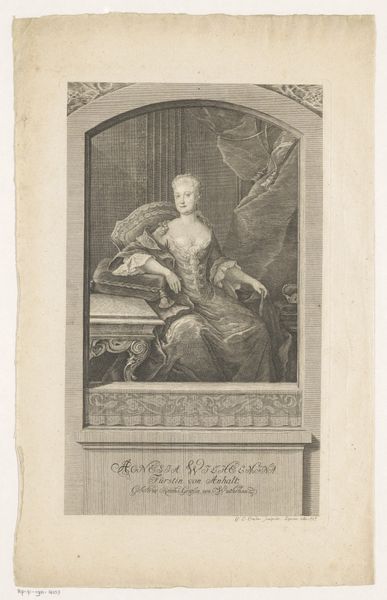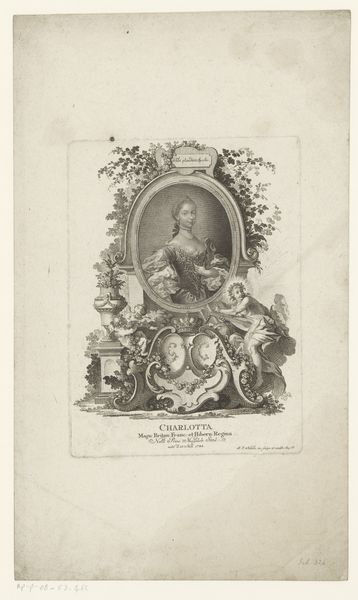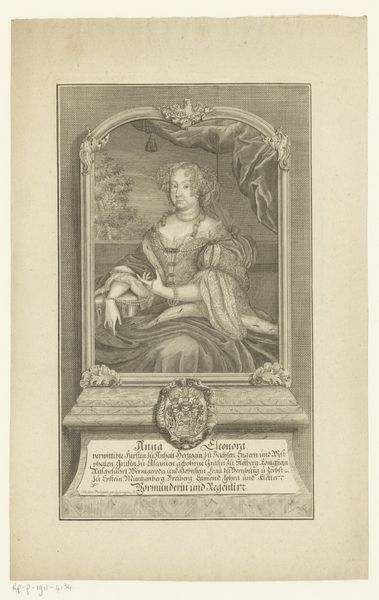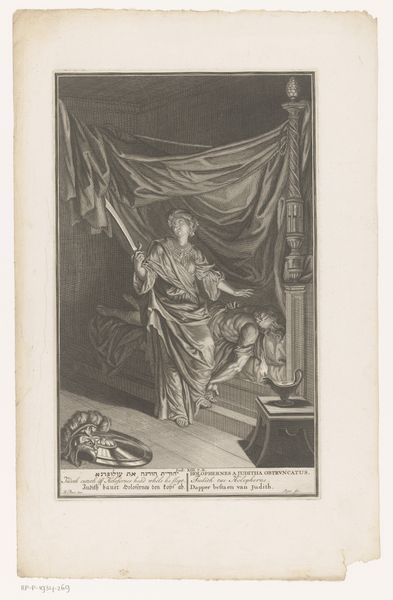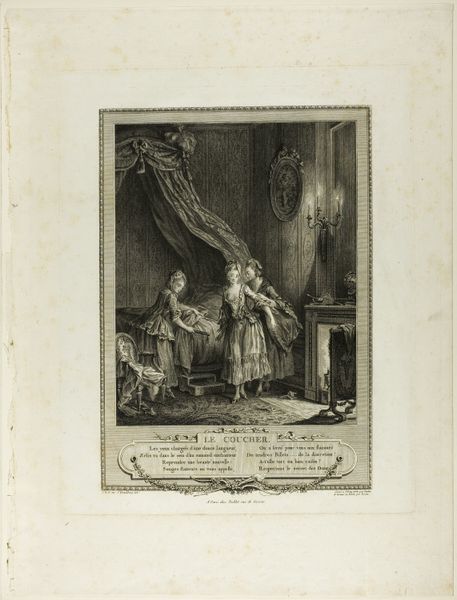
Groepsportret van Elisabeth Christina, keizerin van Oostenrijk en haar familie 1700 - 1749
0:00
0:00
print, paper, engraving
#
portrait
#
baroque
# print
#
old engraving style
#
traditional media
#
paper
#
group-portraits
#
history-painting
#
academic-art
#
engraving
Dimensions: height 284 mm, width 185 mm
Copyright: Rijks Museum: Open Domain
Curator: This engraving, dating from between 1700 and 1749, is a group portrait attributed to Andreas Nunzer. It’s entitled "Groepsportret van Elisabeth Christina, keizerin van Oostenrijk en haar familie," or, in English, "Group Portrait of Elisabeth Christina, Empress of Austria and her Family." The Rijksmuseum houses it, etched onto paper with such delicate detail. Editor: The overwhelming impression, to me, is one of quiet dignity, but maybe also a slight melancholy. You know, that fine-lined intricacy gives everything a muted feel, even royalty. What do you think about the actual execution of it? It almost looks academic. Curator: Definitely. I think what stands out is the almost palpable sense of controlled opulence. The artist’s intention, I think, was to convey both the power and grace inherent in the role of empress and mother. Did you note the detail in her dress, versus the plain attire of her children? Editor: Absolutely, it’s strategic—visual class stratification! Focusing on her role as an economic actor, showing status via labor. Notice the controlled folds of fabric; it points towards a dedicated manufacturing process and availability of raw resources that a family of, say, weavers would struggle to achieve. Did I read correctly that the theme is history painting? The way that "Charitas" is scrawled along the bottom is rather eye-catching too. Curator: Indeed. The choice of engraving as a medium adds to this impression. It was, after all, a meticulously crafted process, requiring skill and patience, like all Baroque artwork. But that academic approach certainly reinforces the values—order, balance, a restrained emotional expression. This piece feels less about raw emotion and more about polished representation. And yes, it is an history painting which places additional symbolic meaning. Editor: That's it—polished. You put your finger right on it! I think that that really does change the way that we receive the art here, and understand the labour. Everything's considered for material display, right down to her gaze! Curator: It truly makes you contemplate the different layers of interpretation possible within such seemingly straightforward imagery, doesn't it?
Comments
No comments
Be the first to comment and join the conversation on the ultimate creative platform.
